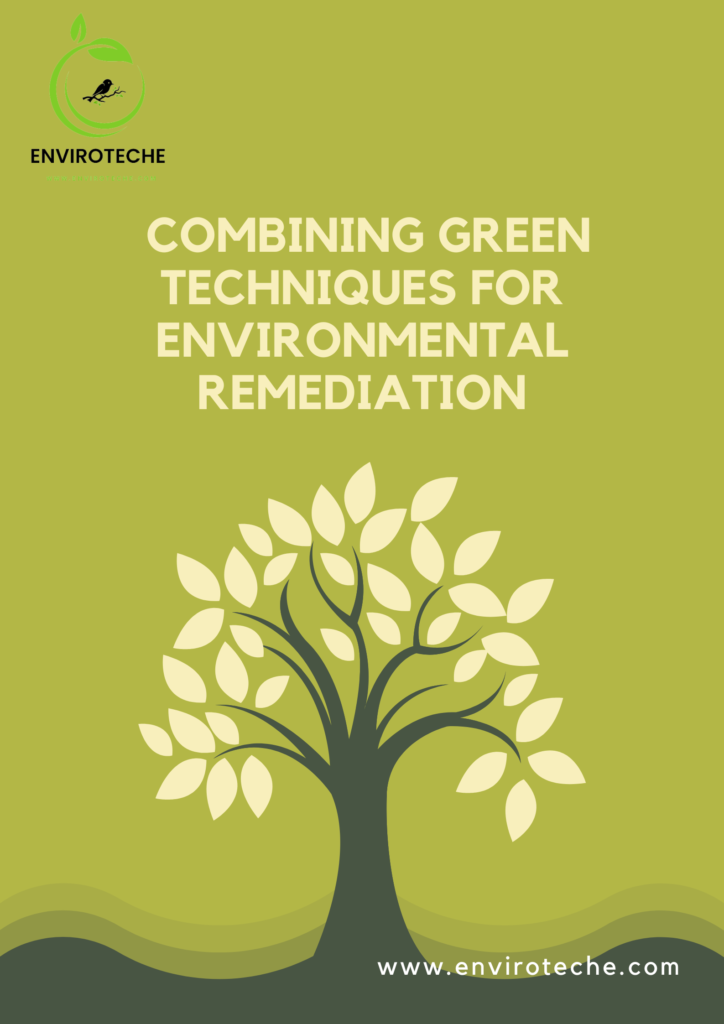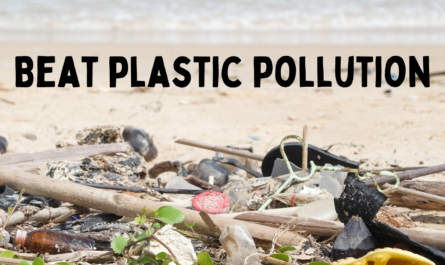
Nanoparticles and Phytoremediation: Combining Green Techniques for Environmental Remediation
Fatima Batool1, Muhammad Abubakar Siddique1, Irfan Haidri1
1Department of Environmental Sciences, Government College University Faisalabad
Introduction:
Environmental contamination is a serious problem that needs to be remedied using efficient and long-lasting methods. Environmental remediation is essential to address the negative effects of pollution on ecosystems, human health, and the environment as a whole. Heavy metals, pesticides, petroleum hydrocarbons, and hazardous chemicals contaminate the land, water, and air as a result of industrial activity, inappropriate waste disposal, chemical spills, and other human activities.
The need to reduce these negative effects and restore the quality and integrity of natural systems gives rise to the requirement for efficient environmental restoration methods. However, conventional cleanup methods including chemical treatments, cremation, and excavation frequently have several problems. They may be pricy, consume a lot of energy, produce secondary pollutants, and disturb ecosystems and communities.
Green technologies for environmental remediation offer an alternative approach with sustainability principles and seeks to minimize the ecological footprint of remediation activities. These technologies help to protect and restore ecosystems and human health. One such green technique is the integration of phytoremediation and nanoparticles. Phytoremediation used the ability of plants to extract, degrade, or immobilize pollutants from the environment.
On the other hand, nanoparticles with their extraordinary properties and reactivity, offers an innovative way to enhance the ability of phytoremediation. They help to improve pollutant uptake, increase surface area for reactions, promote microbial interactions, and enhance plant stress tolerance The combination of nanoparticles and phytoremediation offers synergistic effects that can significantly enhance pollutant removal, degradation, and detoxification. They also help to enhance the plant growth, stress tolerance, and the overall remediation capacity of vegetation. so this method of cleanup has the potential to treat a variety of environmental pollutants.
How nanoparticles enhanced the phytoremediation processes
NPs have shown a great potential in enhancing the effectiveness of phytoremediation processes. When integrated into phytoremediation techniques, they offer various advantages and synergistic effects that improve the pollutant removal, degradation, and detoxification. Let’s explore how nanoparticles enhance phytoremediation efficiency:
- Increased Pollutant Uptake and Accumulation: NPs increase the uptake and accumulation of pollutants by plants. They provide a larger surface area and unique physicochemical properties that help the adsorption and sequestration of contaminants. Such properties of NPs promote the uptake of pollutants by plant roots, resulting to their effective removal from the environment.
- Improved Plant Growth and Tolerance: NPs also promotes the plant growth and enhanced stress tolerance, which are crucial for successful phytoremediation. They can act as plant growth-promoting substances, providing essential nutrients and stimulating physiological processes. Additionally, nanoparticles can enhance plant stress tolerance, allowing plants to thrive in contaminated environments and maintain their remediation capacity.
- Enhanced Degradation and Detoxification Mechanisms: In phytoremediation, nanoparticles also act as catalysts and increase the decomposition and detoxifying processes. They can speed up chemical reactions and redox processes that break down and convert contaminants. By supplying reactive surfaces for pollutant adsorption and encouraging their interaction with microbial populations and plant enzymes, nanoparticles facilitate more effective pollutant breakdown and detoxification
- Stimulated Enzymatic Activity: Nanoparticles can quicken the enzymatic processes that lead to the breakdown of pollutants by acting as catalyst. The activity of enzymes involved in the breakdown of organic contaminants can be stimulated by some nanoparticles, such as zero-valent iron nanoparticles. They give enzymes reactive surfaces so that they may adhere and increase their catalytic activity, which speeds up and improves pollutant degradation.
- Enhanced Phyto-stabilization and Phyto-extraction: Nanoparticles also improves the phyto-stabilization and phyto-extraction processes. In phyto-stabilization, nanoparticles immobilized the contaminants in the soil, lessening their bioavailability and preventing their movement into the food chain. Nanoparticles bind to contaminants, forming stable complexes that decrease their leaching and mobility. In phyto-extraction, nanoparticles enhanced the accumulation of contaminants within plant tissues, enhancing their removal from the environment. Nanoparticles facilitate the transport of contaminants from roots to shoots and increased their sequestration in above-ground plant parts.
Strategies for nanoparticle application in phytoremediation:
- Nanoparticles as Soil Amendments for Enhanced Plant Uptake: Nanoparticles can be used directly to the soil as amendments to increase the uptake of contaminants by plants. They increase the availability and mobility of pollutants by modifying the physio-chemical properties of soil, making them more available for plant roots to absorb. This strategy increases the effectiveness of phytoremediation by improving the overall uptake and accumulation of contaminants in plant tissues.
- Nanoparticle-Assisted Microbial Interactions in the Rhizosphere: Rhizosphere is important for phytoremediation because of the presence of beneficial microorganisms. Nanoparticles can also be used to increase the microbial interactions in the rhizosphere, increasing the growth and activity of microbial communities that contribute to pollutant degradation. They act as carriers or stimulants for beneficial microbes, increasing their colonization around plant roots and facilitating synergistic interactions between plants, nanoparticles, and microorganisms.
- Nanoparticle-Mediated Pollutant Degradation and Transformation: Nanoparticles themselves have catalytic properties that facilitate the degradation and transformation of pollutants. For example, through redox processes, zero-valent iron nanoparticles increase the oxidation of organic contaminants. They interact with pollutants and accelerate their disintegration when introduced into contaminated settings, resulting in more effective and speedy repair.
Future Directions and Challenges in the Application of Nanoparticles in Phytoremediation:
- Emerging trends and advancements in nanoparticle-phytoremediation research: Future research should concentrate on discovering novel forms of nanoparticles, increasing their characteristics, and understanding their interactions with pollutants and plants because the field of nanoparticle-phytoremediation is continually changing. The creation of multifunctional nanoparticles, nanocomposites, and custom nanoparticle systems for certain pollutants or plant species may be examples of emerging developments
- Importance of understanding nanoparticle-plant interactions and fate: It is essential to have a deep understanding of nanoparticle interactions with plants and their destiny in the environment in order to ensure the safe and successful application of nanoparticles in phytoremediation. The uptake, transport, and storage of nanoparticles in plant tissues, as well as any potential consequences on plant growth, development, and ecosystem function, should all the subject of research. Optimizing nanoparticle qualities and reducing any potential negative effects will be made easier by understanding these interactions.
- Overcoming challenges in scalability and field application: Although laboratory studies have shown that nanoparticles can improve phytoremediation, scaling up these technologies for use in the field still presents difficulties. It is necessary to address concerns including affordability, mass manufacture of nanoparticles, and effective delivery techniques. To evaluate the effectiveness, dependability, and environmental effects of nanoparticle-assisted phytoremediation in practical settings, field tests and long-term monitoring are also required.
References
Yasmin, T., Imadi, S. R., & Gul, A. (2023). Nanotechnology in Phytoremediation: Application and Future. In Phytoremediation: Management of Environmental Contaminants, Volume 7 (pp. 427-442). Cham: Springer International Publishing.
Srivastav, A., Yadav, K. K., Yadav, S., Gupta, N., Singh, J. K., Katiyar, R., & Kumar, V. (2018). Nano-phytoremediation of pollutants from contaminated soil environment: current scenario and future prospects. Phytoremediation: Management of Environmental Contaminants, Volume 6, 383-401.
Biswal, T. (2023). Nano-phytoremediation and Its Applications. In Phytoremediation: Management of Environmental Contaminants, Volume 7 (pp. 335-364). Cham: Springer International Publishing.
Yadav, K. K., Singh, J. K., Gupta, N., & Kumar, V. J. J. M. E. S. (2017). A review of nanobioremediation technologies for environmental cleanup: a novel biological approach. J Mater Environ Sci, 8(2), 740-757.
Romeh, A. A. (2022). Nano-Phytoremediation: Using Plants and Nanomaterials to Environmental Pollution Remediation. In Nanotechnology For Environmental Pollution Decontamination (pp. 445-468). Apple Academic Press.
Check Other Schlorships:


